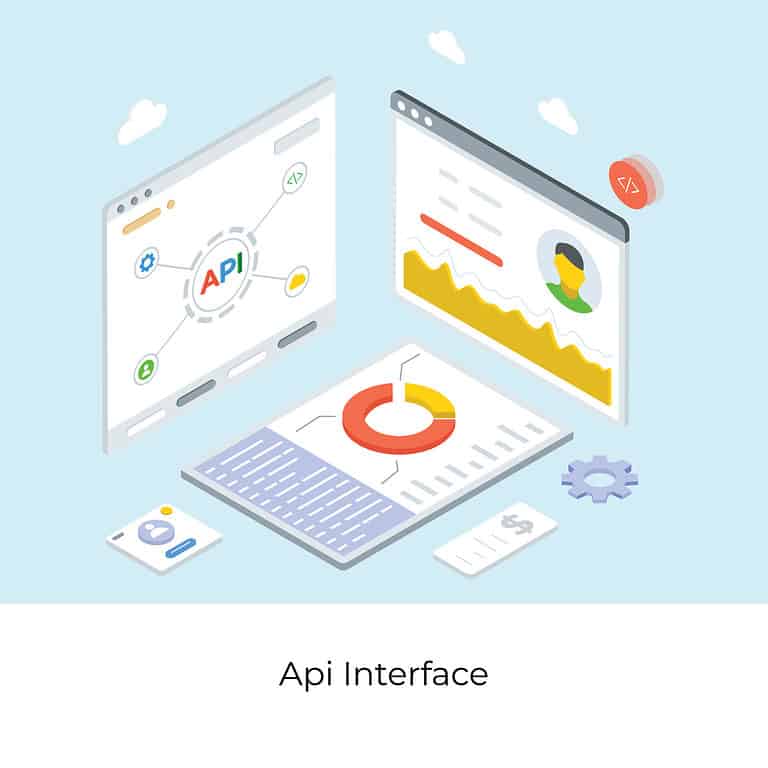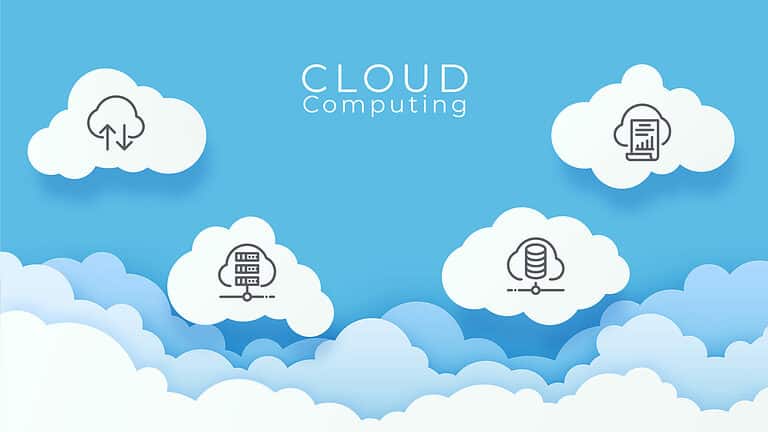Optimizing Security: A Guide to Efficient Cloud Patch Management in 2024
With threats in the digital realm growing, patch management of cloud-based systems is essential. It allows for automated updates, maintenance and security across all platforms from a single source, without even having to leave your seat! Cloud Patch Management makes sure that software vulnerabilities are spotted early on so they can be resolved promptly. This way businesses can stay up-to-date with their hardware and guarantee utmost safety against malicious cyber attacks.
Key Takeaways
Cloud patch management is essential for maintaining security and performance in cloud-based systems, involving the identification, deployment, and verification of patches to mitigate security risks.
Automation is central to efficient cloud patch management, offering benefits such as reducing human error, saving time, and enhancing the accuracy of patch deployments across cloud environments.
Effective cloud patch management strategies include maintaining an up-to-date asset inventory, prioritizing patches using risk-based approaches, and leveraging managed security services and customized patch management solutions for enhanced security.
Unpacking Cloud Patch Management

Cloud patch management is key to the upkeep of security and efficiency in cloud-based systems. This involves identifying patches applicable for the given cloud environment, deploying them efficiently, and validating their successful application. Proper maintenance of these patches helps decrease potential threats relating to software that hasn’t been patched up. To make sure digital assets are well guarded from any damages or disruptions, regular review along with a proper strategy concerning this kind of patch management must be conducted at all times within your organization’s network operating on cloud technology platform(s).
Defining Cloud Patch Management
Patch management, especially cloud based patching solutions, provides a way to update software and applications across distributed servers. It helps identify any vulnerabilities that might exist in the system while prioritizing patches according to risk level. Testing these patches before deployment is important as it keeps manual errors at bay and speeds up the process itself. Rolling out multiple updates can be done quickly with cloud-based platforms since all machines are networked together through clouds.
Using such kinds of patch management solutions offers benefits like automation which makes updating easier due to faster rollout times without leaving behind pieces of information about security flaws or bugs on affected systems during deployment processes.
The Patch Management Cycle
Patch management is a continuous process, which involves various steps in order to properly protect the cloud environment. It begins with vulnerability identification and scanning for Priority of patch remediations. The step-by-step patching procedure typically includes recognizing vulnerabilities as well as developing patches, testing them, deploying across the system and verifying their effectiveness. Automation can be used to improve the efficiency and performance of this management significantly while strengthening security at the same time within clouds.
Key Players in Cloud Patch Management
The patch management process is largely dependent on both IT teams and cloud service providers. It teams are responsible for identifying, categorizing, obtaining and testing patches before they are implemented while the role of cloud services providers involves providing automation to help with scheduling and tracking these updates. All in all, the collaboration between both parties ensures efficient handling of critical patch operations concerning cloud networks.
IT Teams’ Role in Patching
IT specialists have an essential role in managing both private and hybrid cloud systems. They modify patch management processes to fulfill the particular needs of each environment, such as crafting internal methods and utilizing tools for effective patching within a private setup or relying on managed services for carrying out vulnerability control with regards to hybrids. Also, since SaaS or PaaS involve joint responsibilities between IT teams and cloud providers, rigorous monitoring is imperative so compliance can be ensured.
Vendors and Cloud Service Providers
Vendors and cloud service providers are entrusted with patching public clouds, offering services such as patch management that include automation for faster updating while lowering human errors. They will not only deliver the final results but also discover new patches from OS, application and hardware vendors applying critical fixes with less important ones scheduled.
Automation: The Heart of Modern Patch Management

Patch management is heavily dependent on automation, enabling organizations to concentrate patch management and refine the process for deploying patches. This reduces potential human error as well as heightens precision when it comes to delivering updates. Resulting in a quicker overall procedure that increases both security and productivity.
Benefits of Automating Patch Deployment
Automating patch deployment comes with a number of advantages, from cutting down manual labor and allowing IT teams to focus on bigger projects, to avoiding human mistakes and boosting efficiency. It ensures patches are precisely dispatched across all systems for enhanced security too.
Organizations can anticipate around 20 workdays saved every month plus two hours per case due to automating the patching process.
Tools for Automated Patch Management
Patch management and patch manager software can be very helpful in automating the process. Various tools are available to help streamline operations, such as Atera, Automox, GFI LanGuard, ITarian, Kaseya VSA or ManageEngine Patch Manager Plus – cloud-native solutions all with different features that cater for a variety of needs when it comes to managing patches on networks.
Not only do these automated systems save time and effort by efficiently keeping track of updates, but they also offer additional services beyond basic patching capabilities such as reporting functions and control settings which aid in secure computer maintenance.
Strategies for Effective Cloud Patch Management

Patch management is a crucial element in safeguarding an organization’s digital assets. For this purpose, it must be managed using a risk-based approach that gives precedence to the most important patches and allows for testing prior to implementation. This strategy helps ensure all systems are kept up to date with the necessary patching, keeping them secure. It also presents more efficient ways of managing incoming patches on cloud environments. Testing them regularly keeps any threat at bay while giving users access only when these updates have been verified as safe by passing tests beforehand.
Prioritizing Patches with Risk-Based Approaches
Patch management based on risk involves prioritizing patches with regard to the existing threat landscape and vulnerability severity, dedicating patching efforts primarily towards critical vulnerabilities in order to reduce the possibility of attack, improve overall system security and meet compliance requirements.
Scheduling and Testing Patches
In the patch management process, scheduling test patches and using them before deploying is an essential step. Scheduling helps make sure that any deployment of patches will not disturb users too much while also evaluating for potential problems prior to being put into practice. This method makes sure both safety as well as stability on operating systems – especially in fluctuating cloud surroundings. It guards against compatibility issues or system breakdowns which could have been unforeseen ahead of time.
Managing Assets for Successful Patching

Efficient asset management is the foundation for successful patching. This involves keeping track of network elements, hardware and software up to date with an exact inventory list in order to ensure that patches are distributed accurately at suitable times on applicable systems, which decreases security threats significantly.
Maintaining an Up-to-Date Inventory
The importance of precise monitoring and control of all hardware, software, and network components for successful patch management cannot be overstated. This allows the organization to quickly detect any potential weaknesses as well as ascertain which systems need the most urgent attention in order to stay secure and up-to-date on patches.
By having visibility into these critical elements an enterprise can prioritize their resources accordingly by assessing risk levels associated with each system during its patching process.
Asset Management Challenges
Proper asset management in the cloud can be a complex undertaking due to dynamic environments and ownership complexities. To ensure an accurate inventory is kept up-to-date, organizations must implement a strong system along with appropriate tools for patching and managing assets. Implementing strategies such as proactive patch maintenance are also necessary if this goal of keeping all inventories current is to be achieved.
Comparing Cloud vs On-Premise Patch Management

When it comes to patch management, cloud-based solutions have several advantages over on-premise options. Cost efficiency, scalability and improved security are just some of the inherent benefits that come with cloud infrastructure. Onsite setups provide more control when managing patches, yet require significantly more time and resources for successful implementation, which makes them less efficient than their cloudy counterparts. As such, those who need effective patching should look no further than the offerings provided by modern day clouds.
The Shift to Cloud-Based Systems
Cloud-based systems have become increasingly popular due to their ability for remote access, increased flexibility and reduced infrastructure costs. Patch management through this platform presents several advantages including simplified maintenance processes, scalability options, cost savings of up to 80 percent compared with on premise solutions plus enhanced security measures, making it the more budget friendly solution in many cases.
Evaluating the Total Cost of Ownership (TCO)
When selecting a patch management solution, an important part of the decision-making process is to evaluate the total cost of ownership (TCO). Organizations need to take into account not only the initial expenditure on software, but also any other associated costs for implementation and upkeep. By factoring in these various outlay expenses associated with their particular requirements, it can help them determine which option is most economical when dealing with patches.
In this way, they are better able to discern which patch management offering would suit them best while being economically advantageous at the same time.
Overcoming Common Patch Management Hurdles
Patch Management brings its own set of challenges, including tasks such as complying with regulations through automated patch deployment and keeping an up-to-date inventory of assets. Rapidly addressing any emergency patches which need swift handling and coordination by IT teams. Overall efficient management is essential for successful utilization of the available patches.
Dealing with Patch Compliance Issues
One way to address patch compliance is the automation of their deployment as well as keeping an inventory that is always updated. Automation decreases possible human mistakes, applies patches for different systems and applications in a unified manner, minimizes disruption during installation while making sure all systems are using consistent versions of those patches across the network.
Keeping track of said updates guarantees more security since they make sure that any given patch has been applied correctly onto every proper device at the right moment. Lowering vulnerability to attacks.
Handling Out-of-Cycle Emergency Patches
In order to swiftly address critical security vulnerabilities, IT teams must have procedures in place that will allow for the urgent deployment of out-of-cycle emergency patches. Vendors need to provide timely patch releases and support during this process too. This requires effective coordination and communication between both parties in order to ensure efficient resolution of these vulnerabilities.
Leveraging Expertise for Optimized Patch Management
Patch management processes can be optimized by making use of managed security services and customizing patch management solutions. Automating the deployment process, recognizing vulnerabilities, and allowing internal teams to focus on other objectives are some advantages that come with these services. They also allow for a tailored approach which satisfies an organization’s individual requirements in terms of patching their system for maximum protection.
The Role of Managed Security Services
Managed security services make patch management a much smoother process. They ensure timely deployment of patches while actively detecting any that are missing and halting the progress of malware. They can be used to discover vulnerabilities through asset classification as well inventorying assets – saving IT teams from having to focus on tasks related to this responsibility so that instead they can concentrate better on objectives aimed at furthering the business goals.
Customizing Patch Management to Fit Your Needs
Patch management solutions can be tailored to meet the security needs of any organization. The process begins with discovering, categorizing and creating policies for cloud patching. Followed by monitoring progress and testing out configurations that are unique to their environment. Companies must also maintain visibility into patch status in order to stay compliant.
Customizing cloud patch management provides a higher level of system protection against malicious attacks while enhancing device security through automated processes as well as providing version control capabilities which allow custom workflows creation. This helps reduce risks associated with hacking while improving overall system posture across all managed devices within an organization’s network infrastructure thereby ensuring complete coverage over patches when released or updated from vendors on time without fail or delay thus strengthening data privacy levels along the way too!
Summary
Patch management in cloud-based systems is essential to both security and performance. By automating patch processes, keeping an inventory of assets that are up to date, assessing the risk associated with patches, as well as using managed services for expertise. Organizations can successfully optimize their patching operations. As technology develops ever more rapidly into today’s digital age. It has become increasingly important that reliable methods of applying consistent updates be employed through robust cloud patch management strategies.
Frequently Asked Questions
What is cloud patch management?
The process of patch management in cloud computing involves assessing, applying and keeping track of the various patches applied to servers within a cloud environment for both security as well as operational efficiency. This ensures that all deployed patches are up-to-date with the latest updates.
What is patch management in AWS?
Patch management in AWS is a process of administering and executing updates to software so users can avail the newest features while minimizing threats on operational systems. This also includes automating patching as well as associating IAM, CloudTrail from AWS, and Amazon’s CloudWatch Events for maximum security when patching.
What are three types of patch management?
Patch management is a way of maintaining and updating software systems by applying security patches, bug fix patches, or feature update patches. These are the three most widely used patch types that help keep up with system updates.
What is meant by patch management?
Patch management is a process that requires identifying, testing and deploying patches to software for the purpose of correcting errors, eliminating potential vulnerabilities, resolving bugs, as well as boosting security and optimizing performance. Management of these types of updates safeguards data integrity while at the same time improving productivity.
What is the role of IT teams in cloud patch management?
IT teams are essential for managing both private and hybrid cloud configurations, by customizing patch management procedures that satisfy their special needs. This cooperation with vendors and service providers allows for proper security measures in the deployment of patches across the cloud. Ensuring a secure patching process is paramount to maintain an effective system structure within these environments.







